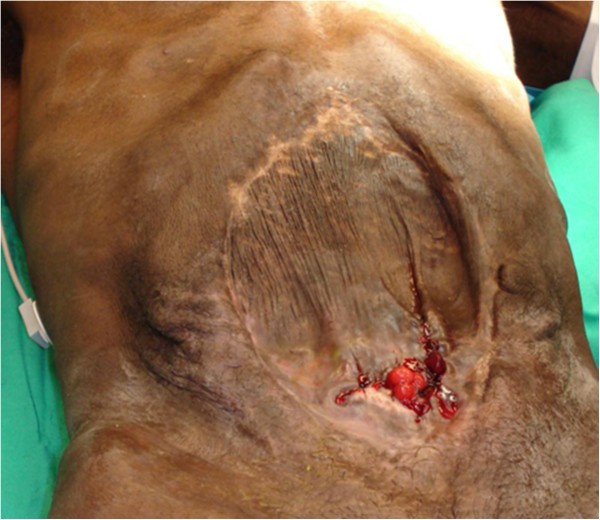Wittmann Patch Abdominal Closure

Open abdomen (OA) has been an effective treatment for abdominal catastrophes in traumatic and general surgery. However, management of patients with OA remains a formidable task for surgeons. The central goal of OA is closure of fascial defect as early as is clinically feasible without precipitating abdominal compartment syndrome.
The Wittmann Patch (StarSurgical Inc, Burlington, WI) is a simple tool composed of two sheets (40 × 20 cm) of Velcro®-like prosthetic biocompatible material (propylene). The two sheets adhere to each other when pressed together and provide a secure temporary closure of the abdominal wall.
Historically, techniques such as packing, mesh, and vacuum-assisted closure have been developed to assist temporary abdominal closure, and techniques such as components separation, mesh-mediated traction, bridging fascial defect with permanent synthetic mesh, or biologic mesh have also been attempted to achieve early primary fascial closure, either alone or in combined use. The objective of this review is to present the challenges of these techniques for OA with a goal of early primary fascial closure, when the patient's physiological condition allows.
Introduction Direct pressure has long been used until World War II for hemostasis, especially in patients with coagulopathy. It was abandoned because of recurrent bleeding at pack removal and late infection.
In a prospective study carried out from 1968 to 1973, Lucas and Ledgerwood [] reintroduced the technique and used it on 3 patients in a series of 637 patients with liver injuries. The authors emphasized “open-mindedness and flexibility” in the use of packing. Subsequently, other authors reported on packing for severe liver injuries [, ]. As the number of patients in these series was small (4 and 17 patients), the idea of packing was still not considered as a desirable and standard practice then [, ].

In 1983, Stone et al. [] reported their experience on 31 patients who were diagnosed to have major coagulopathy soon after the onset of surgery. In the first 14 patients, the procedure was continued with hemostatic replacement and completion of the operation. The mortality was 93% []. In the subsequent 17 patients, the operation was aborted and abdominal tamponade was achieved with sponges.
The mortality was 35%. Unfortunately, the operation was considered as a surgical failure as leaving the abdomen “open” was thought to result in intra-abdominal abscess and intestinal fistulas. Viktor tornbolj kurs lichnogo magnetizma. In 1993, pioneered by Rotondo et al.
[], surgeons began to recognize that patients with major injuries were more likely to die from intraoperative metabolic failure (the vicious triad of coagulopathy, acidosis, and hypothermia) than from failure to complete operative repairs. The need for abbreviated surgery and rapid return to intensive care units (ICU) for aggressive resuscitation were emphasized. Now codified as “damage-control” laparotomy, patients are left with open abdomen (OA) with a planned return to the operating room for definitive surgery.